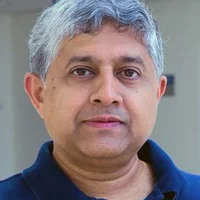The Laboratory of Nanoscale Biology (LNB) investigates the molecular structure and dynamics of complex molecular machines and cascades in the context of the living cell. Current strengths of LNB include technology innovation and the uncovering of structure-function relationships in specific biological contexts. Using our distinct expertise, we engage in the development and improvement of novel methods for electron microscopy and diffraction. In addition, we have unique capabilities in protein bioengineering, (bio-)microfabrication and correlative imaging methods. LNB’s scientific strengths are to link structural information to functional contexts at length scales ranging from proteins to single cells to tissue. Typical examples include it situ studies on eukaryotic cilia proteins in their natural context, studies of protein aggregation or chromatin structure in the context of cell function as well as computation of connectome maps of the brain based on bio-imaging data to reveal new insights into brain function.
LNB Mission
The mission of LNB is to develop cellular structural biology and multi-scale bioimaging programs, complementing the efforts of the sister Labs in the Bio Division, LBR and CRS, which focus on molecular-scale structure-function relationships and on the synthesis of novel radionuclides for cancer therapy models, respecitvely. LNB’s core research programs are also highly integrated with the large-scale facilities at PSI for technology innovation and the bioimaging programs. Together with the newly initiated Scientific Computing Division at PSI, LNB is positioned very well to provide an integrated theme of cellular structure-function relationships driven by theory and data science.
Main research themes
The research groups of LNB are organized into three themes.
Theme-1 consolidates our efforts in Electron Microscopy and Diffraction with a particular focus on methods development.
Theme-2, Cellular Structural Biology & Multi-scale Bioimaging, focuses on in situ Structural Biology with a focus on Cilia, Membrane-protein complexes and Protein aggregation. This theme was recently strengthened through an ERC funded group focusing on Multi-scale Bioimaging to link nanoscale synaptic junctions to the connectome map of the brain.
Theme-3, Mechano-Genomics, is a new theme to LNB. The major focus of this topic is to understand how nanoscale extracellular microenvironmental signals regulate genome programs and cell behavior in health and disease. A targeted recruitment in Computational Biology is currently planned to strengthen this theme.
LNB Organization
Theme-I: Electron Microscopy & Diffraction
- Group Leader: Jan Pieter Abrahams
- Scientist: Tatiana Latychevskaia
- Engineer: Eric van Genderen
- Associated Scientist: Jinghui Luo
Electron Microscopy & Diffraction Group, Electron Microscopy Facility of PSI
- Group Leader: Elisabeth Müller
- Scientist: Emiliya Poghosyan
Theme-II: Cellular Structural Biology & Multi-scale Bioimaging
Cellular Structural Biology Group
- Group Leader: Takashi Ishikawa
- Associated Scientist: Roger Benoit
- Scientist: Roger Benoit
- Group Leader: Adrian Wanner
Structural Biology of Neuronal Systems
- Scientist: Jinghui Luo
Theme-III: Mechano-Genomics & Computational Biology
- Group Leader and Head of LNB: G.V. Shivashankar
Computational Biology Group (to be established)
Associated scientists
- Philipp Berger (Cellular engineering and microscopy)
- Celestino Padeste (Biointerfaces, supports for serial protein crystallography)
- Soichiro Tsujino (Ultrasound mechanobiology)


